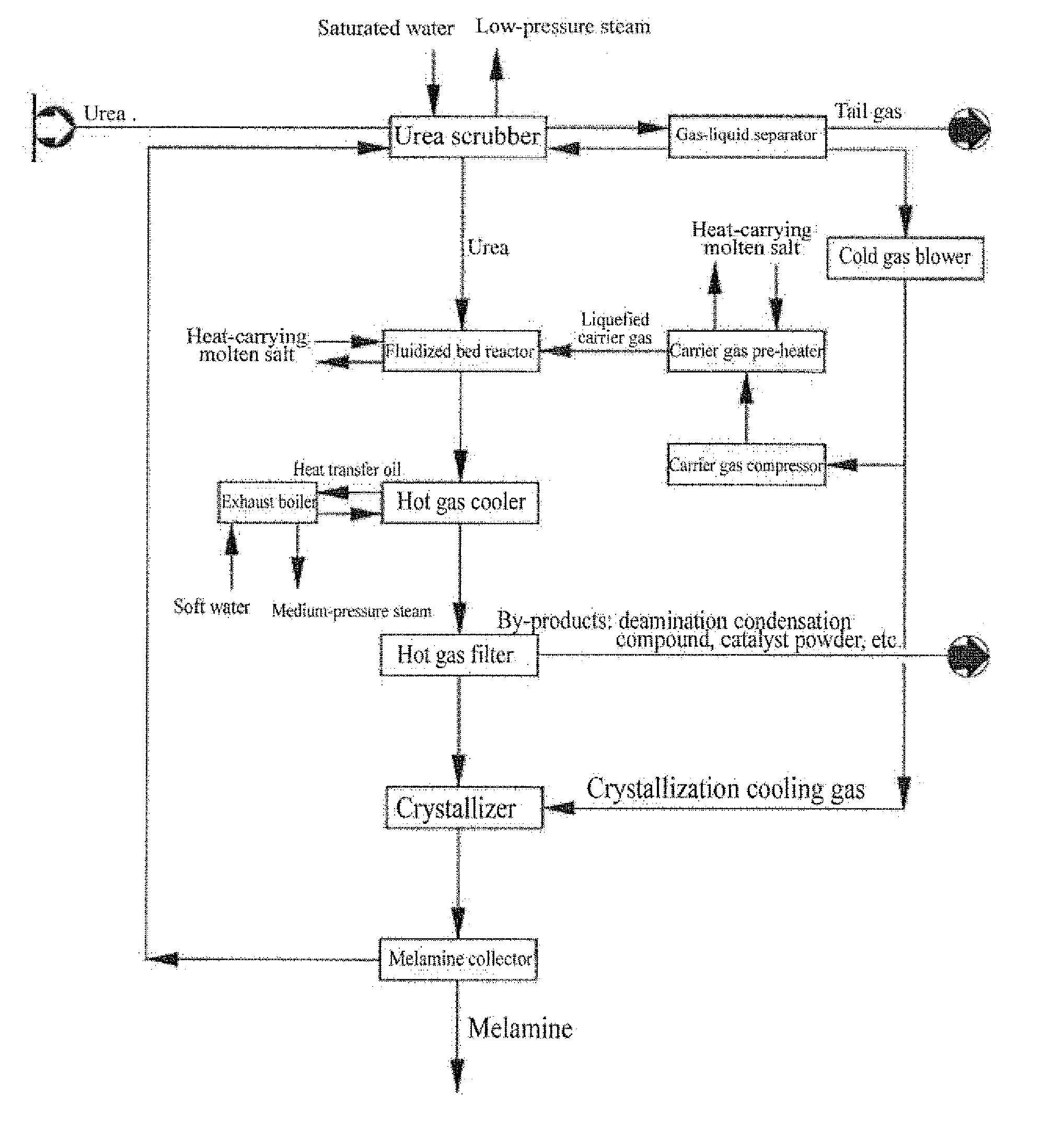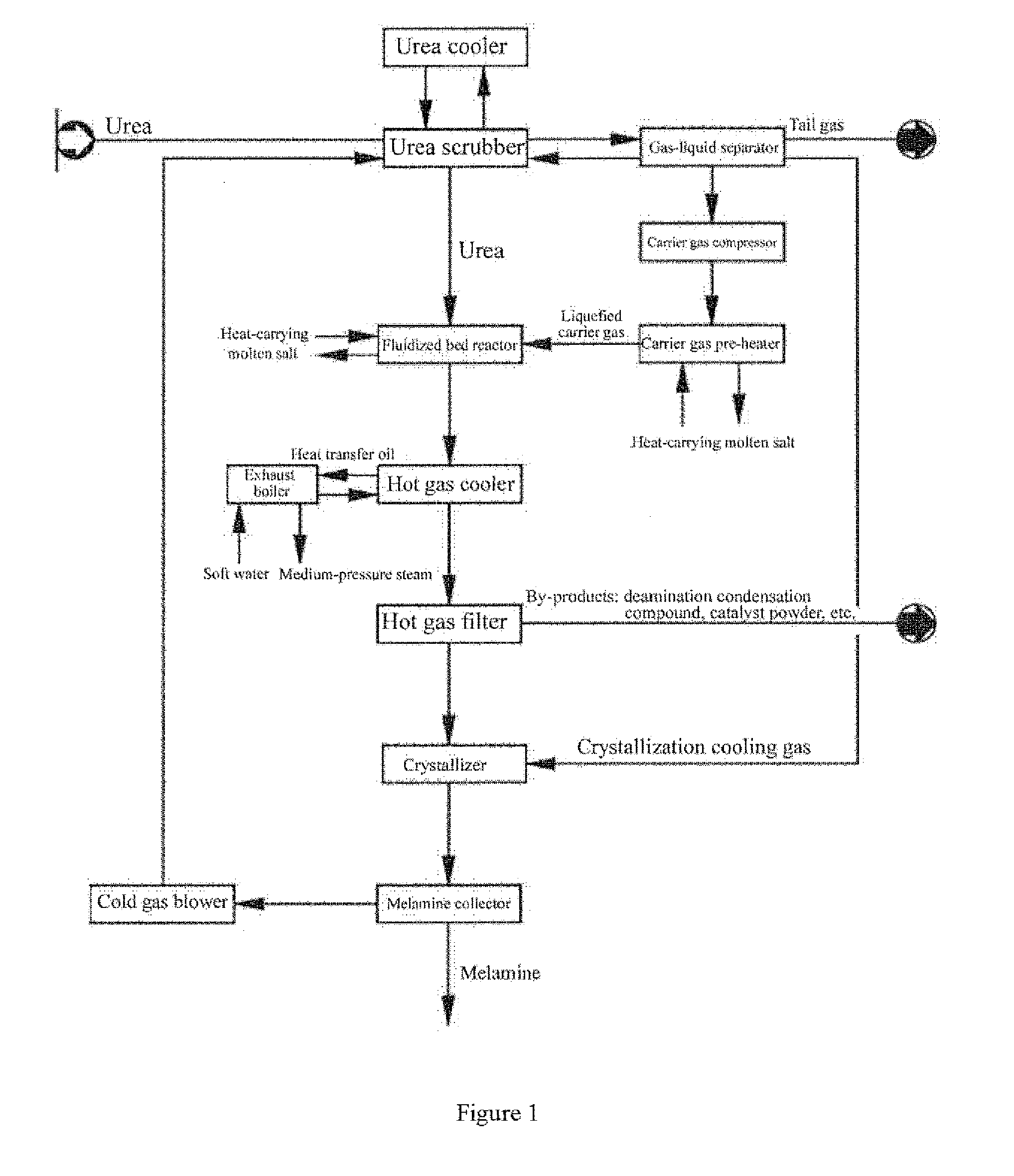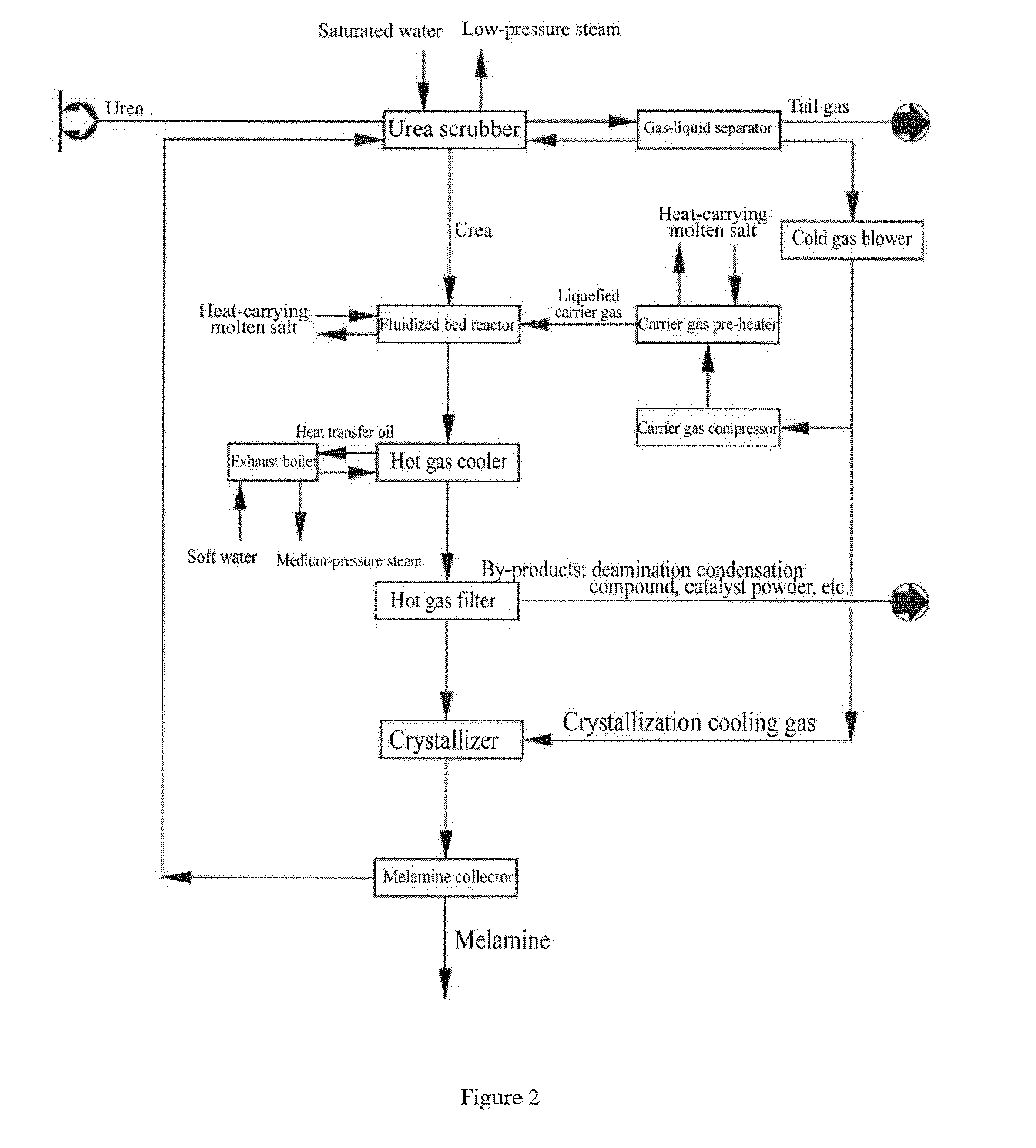System and process for melamine production by gas-phase quenching method of energy efficient and cost saving type
a technology of gas-phase quenching and melamine, which is applied in the field of system and process for melamine production by gas-phase quenching method of energy efficient and cost saving type, can solve the problems of scarring very easily, poor economic performance of melamine production process, and blockage of tubes and equipmen
- Summary
- Abstract
- Description
- Claims
- Application Information
AI Technical Summary
Benefits of technology
Problems solved by technology
Method used
Image
Examples
embodiment 1
[0048]The system for melamine production by gas phase quenching method of this embodiment is shown in FIG. 2, comprising:
A urea scrubber, after which a fluidized bed reactor, a hot gas cooler, a hot gas filter, a crystallizer and a melamine collector are installed in series successively, where the said melamine collector is connected to the said urea scrubber, wherein, the said hot gas cooler in this embodiment is multi-tube cooler.
The said fluidized bed reactor is connected to a carrier gas pre-heater which is connected to a carrier gas compressor;
The said system for melamine production further comprises a gas-liquid separator connected to the said urea scrubber that is connected to a crystallizer. The said gas-liquid separator in this embodiment is a wire mesh demister using inertia and is connected to the said carrier gas compressor via a cool gas blower.
A cool gas blower is provided between the said gas-liquid separator and the crystallizer.
[0049]Production process of the said s...
embodiment 2
[0050]The system for melamine production by gas phase quenching method of this embodiment is shown in FIG. 3, comprising:
A urea scrubber, after which a fluidized bed reactor, a hot gas cooler, a hot gas filter, a crystallizer and a melamine collector are installed in series successively, where the said melamine collector is connected to the said urea scrubber. The said hot gas cooler in this embodiment is connected to exhaust boiler.
The said fluidized bed reactor is connected to a carrier gas pre-heater which is connected to a carrier gas compressor, wherein the carrier gas pre-heater in this embodiment is tubular heat exchanger;
[0051]The said system for melamine production further comprises a gas-liquid separator connected to the said urea scrubber that is connected to the said crystallizer. The said carrier gas compressor is connected to the said gas-liquid separator;
A cool-air blower is provided between the said gas-liquid separator and the said crystallizer, and an evaporative c...
embodiment 3
[0054]System for melamine production by gas phase quenching method in this embodiment is identical to that in Embodiment 2.
[0055]Production process of the said system for melamine production by gas phase quenching method in this embodiment is as follows:
(a) The carrier gas is compressed in carrier gas compressor until its pressure reaches 0.5 MPa and then the gas is heated in the carrier gas heater to the temperature of 400° C. with reaction gases and high temperature molten salt successively before flowing into the fluidized bed reactor as fluidized gas.
(b) Melamine synthesis, urea melt at 140° C. in the urea scrubber is pumped into the dense phase of catalyst of the fluidized bed reactor, where the pressure is 0.4 Mpa and the temperature is 380° C. Urea reactions produce reaction gases such as melamine, ammonia and CO2. The said catalyst in this embodiment is porous colloidal aluminum silicate.
(c) Cooling of reaction gases: the said reaction gases come out from the top of the flui...
PUM
 Login to View More
Login to View More Abstract
Description
Claims
Application Information
 Login to View More
Login to View More - R&D
- Intellectual Property
- Life Sciences
- Materials
- Tech Scout
- Unparalleled Data Quality
- Higher Quality Content
- 60% Fewer Hallucinations
Browse by: Latest US Patents, China's latest patents, Technical Efficacy Thesaurus, Application Domain, Technology Topic, Popular Technical Reports.
© 2025 PatSnap. All rights reserved.Legal|Privacy policy|Modern Slavery Act Transparency Statement|Sitemap|About US| Contact US: help@patsnap.com



